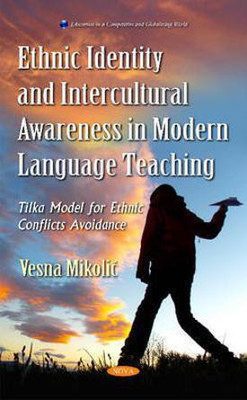Ethnic Identity & Intercultural Awareness in Modern Language Teaching(English, Hardcover, Mikolic Vesna)
Quick Overview
Product Price Comparison
This monograph applies several modern approaches to ethnic studies, sociolinguistics, intercultural education, and transactional analysis and, consequently, introduces a new L1 and L2 teaching model TILKA Teaching Interculturality through Language and Literature for Conflicts Avoidance. It includes an intercultural and interdisciplinary approach which integrates language and literature teaching through research and activity, as well as the principles and methods of transactional analysis, especially the power game in the drama triangle model. The TILKA model is engaged in helping teachers, education policy makers, and researchers to find ways to strengthen possibilities to peaceful interethnic and intercultural coexistence. Tilka is the title of the 19th century Slovenian short story of a marriage attempt by a clumsy and physically weak peasant boy Tilka. It is a great psychological sketch of a little man who, on one hand, warns against society's inadequate attitude towards the different and, on the other hand, emphasizes the importance of the social skills development for interpersonal contacts and overcoming conflict situations. All of this is also offered by the TILKA teaching model. Within this model, teaching language and literature is based on life situations and authentic materials. Fiction and non-fiction texts are used as a starting point for discussions and comparisons of different cultures and societies on very complex and problematic social areas. In this way, the students develop critical cultural awareness on the cognitive, emotional and active level, which is developed simultaneously with the communicative and reading competence. Thus, the students are achieving intercultural communicative competence. Language, therefore, is taught simultaneously with culture, including literature, regardless of whether it is the first or the second/foreign language. In addition, learning language through literature allows students to identify and acquire communication patterns, which, according to the theory of transactional analysis, are essential for effective communication. Through this, they can evaluate their own role through interaction (the Persecutor, the Victim or the Rescuer) and are able to stand out from harmful relations in the power triangle. Each learning unit contains four steps: the approach to the topic, a linguistic and a stylistic part, becoming absorbed in the topic and applying the topic. In fact, the whole book is a presentation of theories and concepts that are part of this teaching model. The first three chapters contain a review of significant findings on phenomena connected with ethnicity and communicative competence and shed light on innovative concepts of ethnic identity, interethnic awareness, communicative competence and intercultural communicative competence. The fourth chapter presents different approaches of the intercultural education, while the fifth chapter applies the findings relating the intercultural communicative competence to the specific language teaching and learning methods of the TILKA model. They are based on the theory of intercultural education connected with intercultural pragmatics, theory of the cultural keywords, philological concept of language and literature, transactional analysis, and constructivism in education. The presentation of the model is followed by an example of a concrete learning unit in which teachers can find concrete proposals for its implementation.


